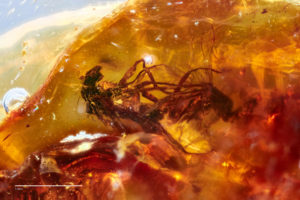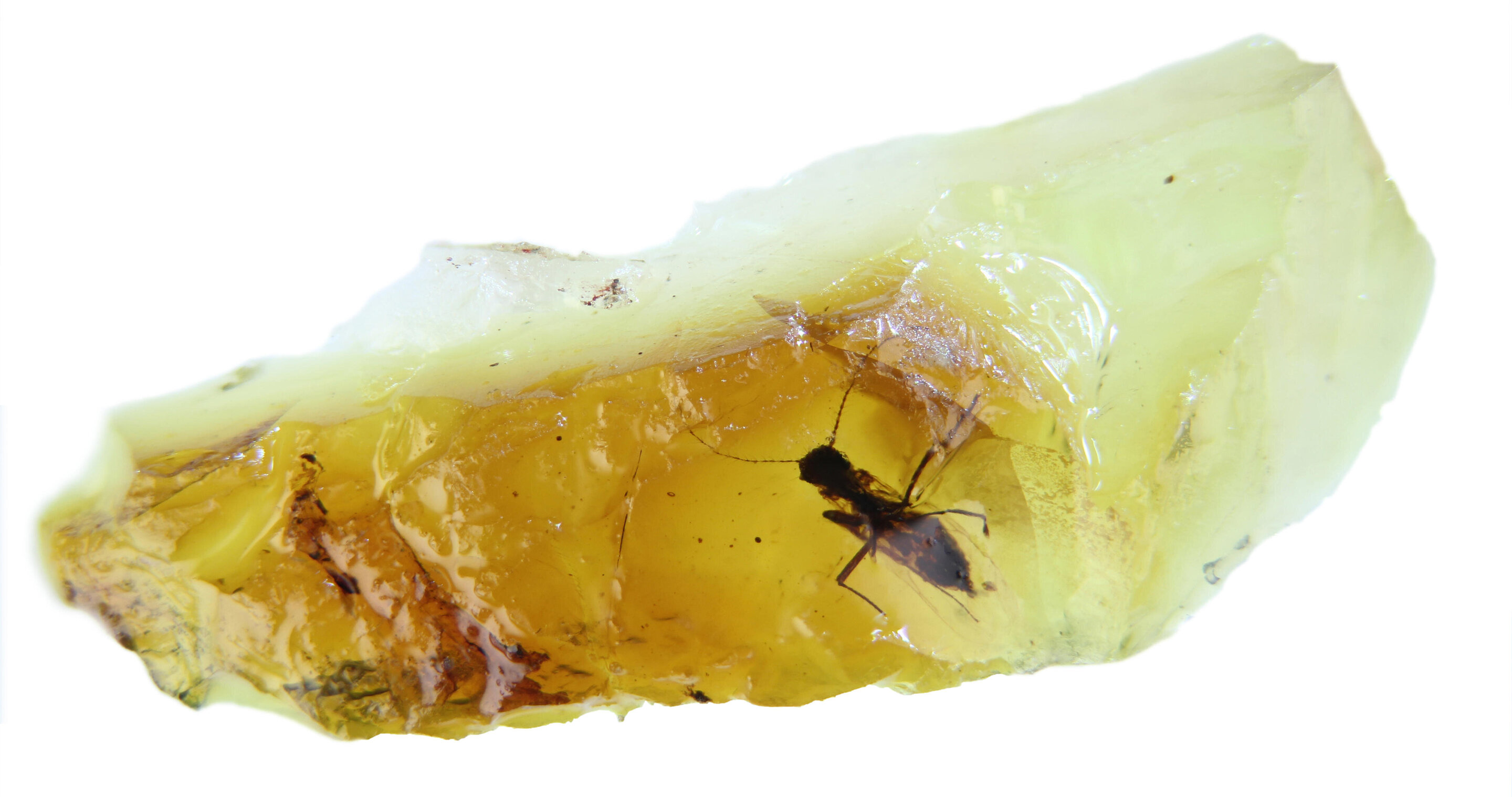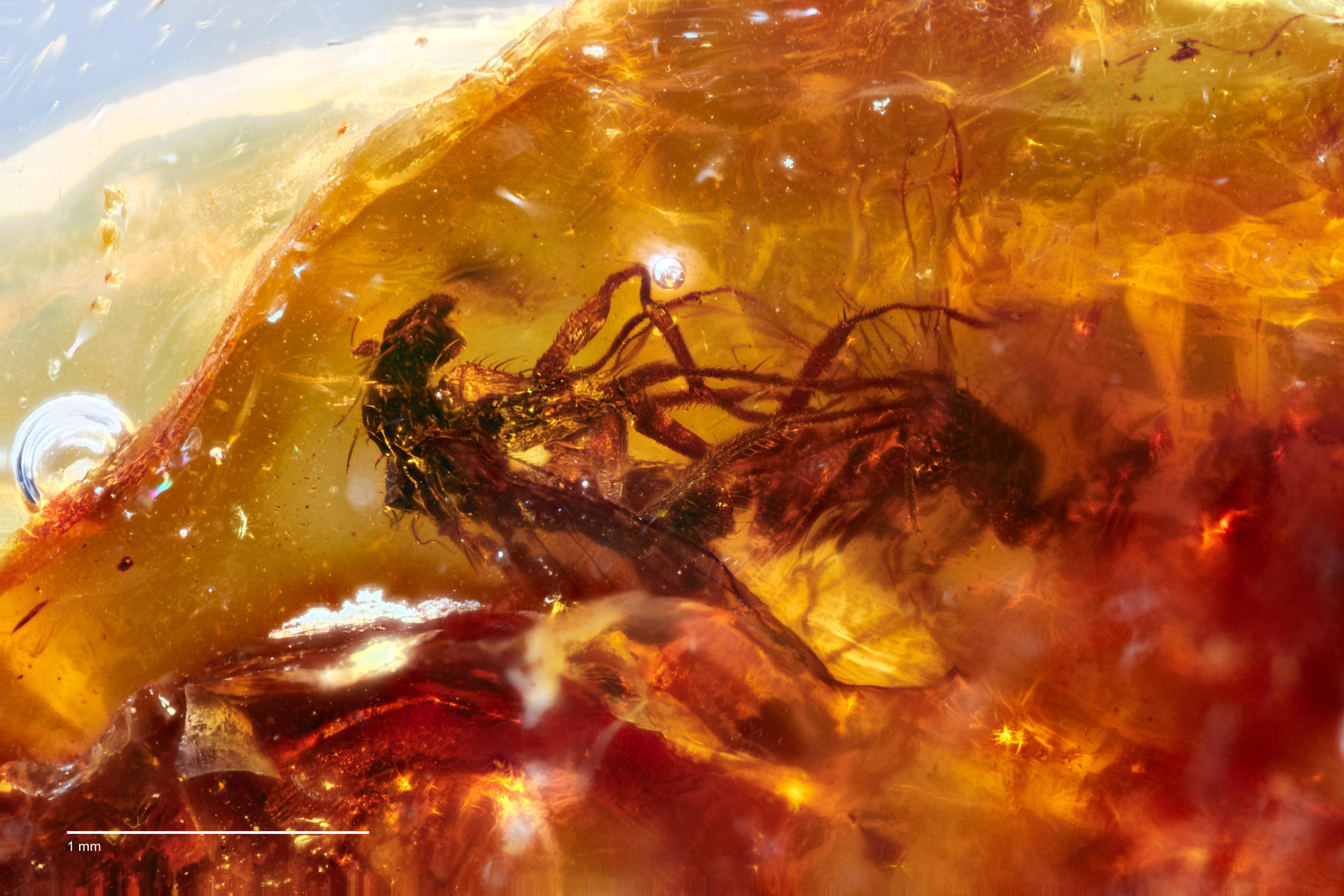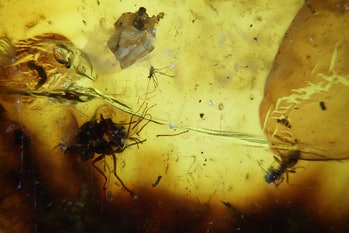
Frozen In Time: Researchers Find 2 Mating Flies Trapped In Prehistoric Amber
Amber, which is also known as the fossil tree, is present in rock layers all over the world. However, paleontologists never found amber in New Zealand or Australia.

Jeffrey Stilwell, a paleontologist at the Monash University, which is located in Melbourne, Australia, and a group of students, found a stash of Amber in southern Australia 2011.
The find led the researchers to mount a further search for more amber at sites across New Zealand and Australia.
This led them to find amber that had 2 insects frozen in the act of mating.
Dr. Stilwell said, “I looked at the piece under the microscope, and when I looked at it, I said, ‘This looks really important, because it looks like they’re almost attached or something.’”
He added, “I couldn’t believe it — it looks like they’re mating.”

Dr. Stilwell and his colleagues detailed their findings in a paper that was published on Thursday in the Scientific Reports.
Dr. Stilwell calls his findings as to the “frozen behavior”.
It seems like that the insect couple was fornicating when they were trapped in the gluey resin of the tree that they were one.
They subsequently froze in amber, leaving them preserved in the middle of the act.
The resin then hardened over time, ensuring that the flies and their entwined legs were forever suspended in the act of procreation.
The thing that makes this special is that it only takes flies just a couple of seconds to copulate.

Such a thing is extremely rare in the fossil record as it means that absolutely nothing happened in the moments between the flies were living and when they died and became entombed.
The frozen mating flies were discovered in one of the 6,000 pieces of fossilized amber unearthed from rocks dating back between 54 to 40 million years ago.
Professor Stilwell said, “This is one of the greatest discoveries in palaeontology for Australia.”
He added, “Amber is considered to be the ‘Holy Grail’ in the discipline, as organisms are preserved in a state of suspended animation in perfect 3D space, looking just like they died yesterday.”
He continued, “But, in fact, [they] are many millions of years old, providing us with an enormous amount of information on ancient terrestrial ecosystems. This may be the first example of ‘frozen behaviour’ in the fossil record of Australia.”
Victoria McCoy, a paleontologist at the University of Wisconsin, Milwaukee, said that it is possible that he flies that were mating are not in the same position they were in when they died.
Professor Victoria said, “It’s true and valid information.”
She added, “It is possible one fly was trapped in the amber and the other was a little excited and tried to mate.”
What a great find by the professors!